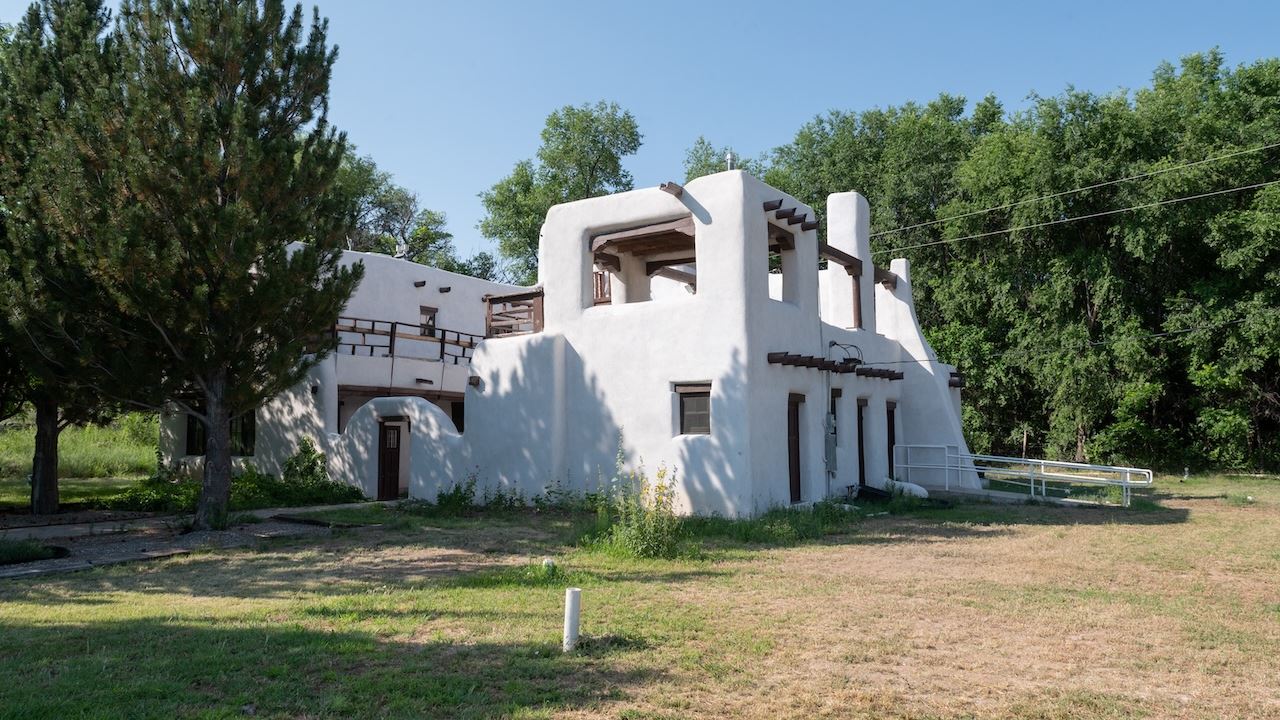New Mexico is best known for growing a variety of crops, including chile, pecans, onions and grapes, but New Mexico State University researchers are delving into several non-traditional crops to learn more about how adaptable they are to the state’s regions.
The public is invited to learn more about that research during this year’s field day at the Sustainable Agriculture Science Center in Alcalde, New Mexico. The field day will take place from 8 a.m. to 1 p.m. Aug. 28 at the center, located at 371 County Road 40. The event is free and will feature wagon tours of the center’s research plots, along with a walking tour with researchers discussing fruit production.
Saeid Zehtab Salmasi, the center’s research director, will discuss his research on saffron production in north-central New Mexico, along with chickpea cultivar selection, at this year’s field day. Salmasi said that last fall, his team successfully harvested flowers from about 2,000 saffron corms that were planted in both hoop houses and open fields. He is now looking into assessing the viability of saffron production in northern New Mexico.
“Saffron has a unique growing cycle wherein flowers emerge during fall, followed by leaf growth until May,” Salmasi said. “Subsequently, the leaves desiccate, leading to a dormant period until late September when new corms develop to yield flowers for the succeeding year.”
Salmasi’s research team is planting 2,000 saffron corms between now and September. The upcoming study aims to investigate how planting timing and varying irrigation levels influence saffron cultivation.
Saffron is commonly known as the world’s most expensive spice, with an average price of $30 per gram for saffron grown in the United States. That could potentially generate more than $50,000 in net revenue per acre.
“Diversification toward high-value crops can be a promising strategy to enhance farmers’ economic welfare in the region,” Salmasi said. “The project will produce new knowledge and promote high-value, low-input plants to the growers of northern New Mexico, and the soil health and environmental benefits can improve overall on-farm resiliency, reduce off-farm inputs and increase biodiversity.”
Other research presentations include:
- Lavender selection/medicinal herbs: Robert Heyduck, associate research scientist.
- Grass pasture options for northern New Mexico: Mark Marsalis, research director, NMSU Agricultural Science Center at Los Lunas.
- Managing cover crops in arid and semiarid cropping systems: John Idowu, Extension agronomy specialist, Extension plant sciences department.
- Industrial hemp production, agronomy and sustainability, S1084 multistate project: Salmasi.
- Insect pollinators of New Mexico: Joanie King, Extension entomology specialist.
- Fruit research updates (high tunnel stone fruit production, high-density apple rootstock trial, table grape trial, etc.): Shengrui Yao, Extension fruit specialist.
- Nut species for northern New Mexico: Richard Heerema, Extension pecan specialist.
- Jujube cultivar trials and cultivar selection in New Mexico: Yao.
To register for this year’s field day, visit https://rsvp.nmsu.edu/rsvp/alcalde.
-30-
PHOTO CAPTION: New Mexico State University’s Sustainable Agriculture Science Center in Alcalde, New Mexico, will host its annual field day from 8 a.m. to 1 p.m. Aug. 28 at the center, located at 371 County Road 40. The event is free and will feature wagon tours of the center’s research plots, along with a walking tour with researchers discussing fruit production. (NMSU photo by Josh Bachman)
IMAGE DESCRIPTION: Building profile photo
PHOTO CAPTION: Saeid Zehtab Salmasi, research director of New Mexico State University’s Sustainable Agriculture Science Center in Alcalde, New Mexico, will discuss his research on saffron production in north-central New Mexico at the center’s field day Aug. 28. Last fall, his research team successfully harvested about 2,000 saffron corms that were planted in both hoop houses and open fields. He is now looking into assessing the viability of saffron production in northern New Mexico. (NMSU photo)
IMAGE DESCRIPTION: A pink saffron crocus growing in a field.

